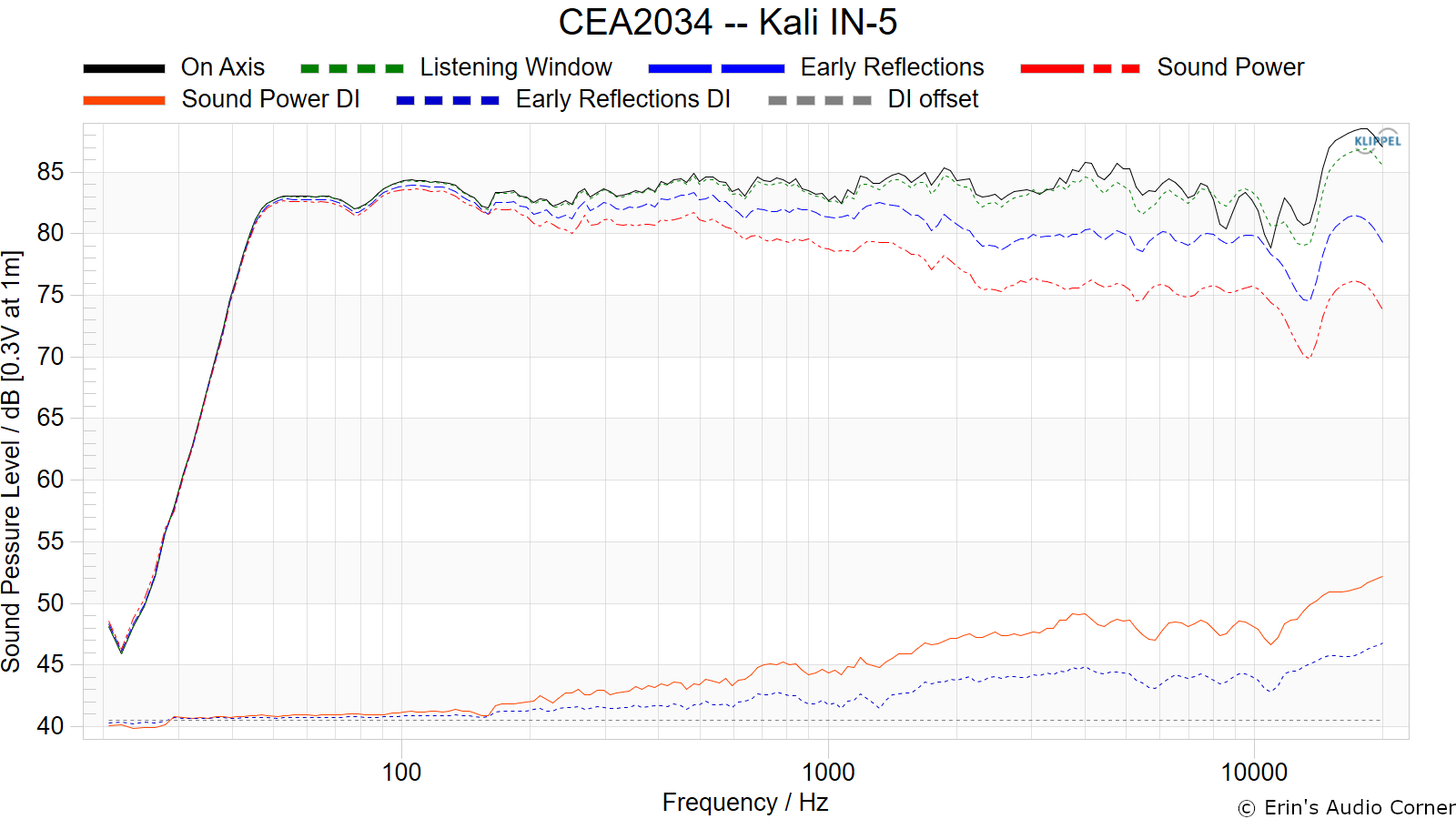Well, after being disappointed by the Focal Solo6 Be, I have something better for you. Here's the new Polk Reserve R200, at $700 a pair.

Behold:

Say whatttt. I mean okay, the Di curves aren't the best, but look how flat that listening window is! It handily outdoes the more expensive Legend L200, which is supposed to be the better speaker.

In fact, it's just about Genelec good:

Notably, its free of the midrange resonances that were caused by the port of the L200 so Polk's new port implementation is definitely better, even if not perfect.
The horizontals are solid, though that ring tweeter causes heavy beaming after 5kHz:

I've never minded this much, but it does mean the sepaker is very sensitive to how you angle it.
The normalized graph shows us that the dip at 4.5khz is some on-axis diffraction:

Horizontal ER shows the solid performance more clearly:

Now the verticals:

Long story short: This is a great deal of a speaker. It sounds great, with a soundstage that is both wider than most waveguidey speakers, but also a quite focused. The biggest flaw is that it's sensitive to positioning, although this also lets you tweak the treble to your liking. Would 100% get this over the L200, but it also just strikes me as a really good deal for a 6.5-inch speaker with such solid measurements.
Good stuff, Polk.
Behold:
Say whatttt. I mean okay, the Di curves aren't the best, but look how flat that listening window is! It handily outdoes the more expensive Legend L200, which is supposed to be the better speaker.
In fact, it's just about Genelec good:
Notably, its free of the midrange resonances that were caused by the port of the L200 so Polk's new port implementation is definitely better, even if not perfect.
The horizontals are solid, though that ring tweeter causes heavy beaming after 5kHz:
I've never minded this much, but it does mean the sepaker is very sensitive to how you angle it.
The normalized graph shows us that the dip at 4.5khz is some on-axis diffraction:
Horizontal ER shows the solid performance more clearly:
Now the verticals:
Long story short: This is a great deal of a speaker. It sounds great, with a soundstage that is both wider than most waveguidey speakers, but also a quite focused. The biggest flaw is that it's sensitive to positioning, although this also lets you tweak the treble to your liking. Would 100% get this over the L200, but it also just strikes me as a really good deal for a 6.5-inch speaker with such solid measurements.
Good stuff, Polk.
Last edited:
